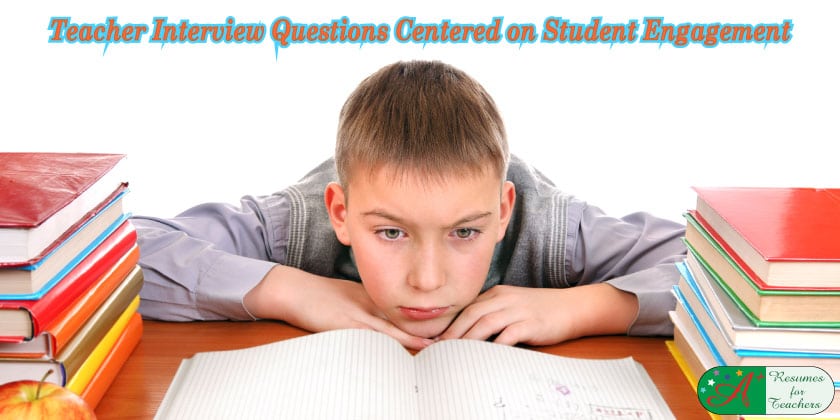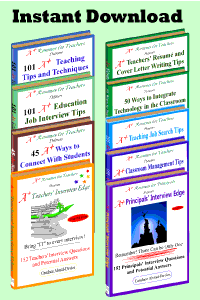This article will explain the teaching methods you use to help students have fun and be active in their learning. Many teacher interview questions revolve around your teaching methods and how you conduct learning in your classroom.
Examples of the types of interview questions relating to student engagement you might be asked at your next interview include.
What methods do you use to inspire students to be active in learning?
I consistently strive for my students to engage in active learning by using various active learning methods to encourage students to engage in hands-on learning experiences. These methods include brainstorming, mind mapping, case studies, role-playing, simulations, problem-based learning, incorporating literature collective problem solving, and student creative construction.
Ensuring students are engaged in the lessons reduces classroom disruptions and optimizes learning.
Brainstorming, mind mapping, and collective problem solving all serve to get students actively thinking and contributing ideas and recording a variety of possible solutions. As with mind mapping, students write down a central idea and then think up new and related ideas that radiate from the central idea. And collective problem solving is focused on rethinking the nature of the problem itself.
Student-created construction is great because it gets students to develop a creative project to convey several themes. Students produce an artistic product either individually or collaboratively. Through creative expression, students approach the material more effectively and reflectively.
Case studies and problem-based learning allow students to analyze a particular case or problem used as a basis for applying knowledge and/or drawing conclusions in similar situations. These tasks are often based on real-world scenarios and environments and are designed to foster learning to real-world situations that the learners may encounter in their futures.
In role-playing and simulations, I provide either real or imaginary context along with a range of relevant characters/roles. Students then improvise dramatic interactions among their characters which brings the events of scenarios to life.
How do you make learning fun? Provide an example.
When learning is fun, it is also more meaningful and enjoyable. It not only helps students to remain attentive but also motivates and pleases them. An unmotivated student will not be willing to learn. Fun activities, therefore, are great ways of making children learn better. They help students relax, break down the emotional filter, and focus in the classroom.
I try to make learning fun by incorporating many creative and engaging activities throughout my lessons and utilizing various teaching methods to reach all learners. When beginning a new topic or unit to teach, I try to plan so that students will become immersed in the topic. For instance, I decorate my classroom related to the theme I am teaching, such as dinosaurs. I start a topic or unit by playing an entertaining DVD that relates to the topic. I also incorporate group projects where students have to work together to develop something related to the topic.
I try to utilize a variety of learning materials to complement my teaching. Apart from textbooks, I count on numerous sources for making my class fun: newspaper articles, audio texts, role-play activities, films, music, educational games, group work, experiments, field trips, guest speakers, and quiz games. I also try to challenge my students by providing hands-on, dynamic activities that require critical thinking skills such as problem-solving, riddles, or reading comprehension questions. I will sometimes allow these activities to be performed in groups, allowing more interaction between students.
Finally, allowing students to utilize their imaginations actively will always be fun for them. I engage my students in role-playing, creating stories, theater productions, and computer-based creative simulations.
Of course, I differentiate the instruction to teach students who were struggling with reading or any other concept.
We hope you’ve found this article helpful. If so, please feel free to comment and share below!
If you would like to prepare yourself further, check out the following resources written by Candace Alstad – Davies, with 16+ years of experience preparing teachers for job interviews.


